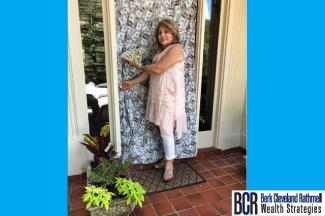
When is it OK to take money out of my house?
Many seniors who are looking for ways to improve their finances in retirement want to learn more about reverse mortgages. These are not a typical part of our clients’ financial plans; however, we were asked about these recently by a young client who was concerned about her grandparents, whose assets had dwindled down to a primary residence.
Reverse mortgages developed a bad reputation, largely because many people incorporated them into their retirement planning, obtained them too early, and did not use them appropriately. But there have been a lot of changes to these products in the last ten years, and they have become much more attractive than they used to be for those who truly need them.
Who needs a reverse mortgage?
Most of us think of the equity in our homes as a safety net we can fall back on in the event dire, unforeseen circumstances arise. There are several ways to use that equity, and a reverse mortgage is one of them.
Reverse mortgages, however, are dangerous in a retirement plan at the beginning of retirement. If you need one to make your retirement plans work, your plan is very risky. These are the last resort that should be used only when your retirement “Plan A” and your backup plan have both failed.
If you are considering a reverse mortgage as your last resort, it still may not be the solution you are looking for, depending on your circumstances. If any of these situations apply to you, you may need to keep looking for other solutions.
How a reverse mortgage works
To get a reverse mortgage, a person must own a home and be at least 62 years of age. The person continues to live in the house, retains the title and ownership, and remains responsible for paying property taxes, insurance, and home repair costs. Payments from the mortgage can be received either as a lump sum, a line of credit, or in monthly payments.
The money received does not count as income and is not taxable. It does not affect eligibility for Social Security, Medicare benefits, or count as income toward Medicaid eligibility as long as the money is spent in the same month it is received.
There are no restrictions on how these funds can be spent. They can be used to pay for anything from long-term care to vacations, but they should be used only for necessities. The amount of funds the borrower can receive from a reverse mortgage is capped at 80% of the home’s equity.
Once the cap is reached, no more funds will be paid, but the homeowner can remain in the home until he/she dies, moves out, or leaves the home for longer than 12 months. At that point, ownership of the house transfers to the mortgage company. In the case of death, the homeowner’s children cannot inherit the house, but they can choose to buy it back from the mortgage company without it being placed on the open market.
If you must take out a reverse mortgage
Again, a reverse mortgage should be used only by those who have no other options. If you find yourself in the unfortunate position of genuinely needing one of these loans, use it with extreme caution.
Do not take out too much money early on. Part of the reason reverse mortgages developed a bad reputation was because people obtained them before they truly needed them, took out too much money early on, and then ran out of money. Create the same kind of spending plan for these funds as you do for any other retirement funds to ensure your resources last as long as you need them.

